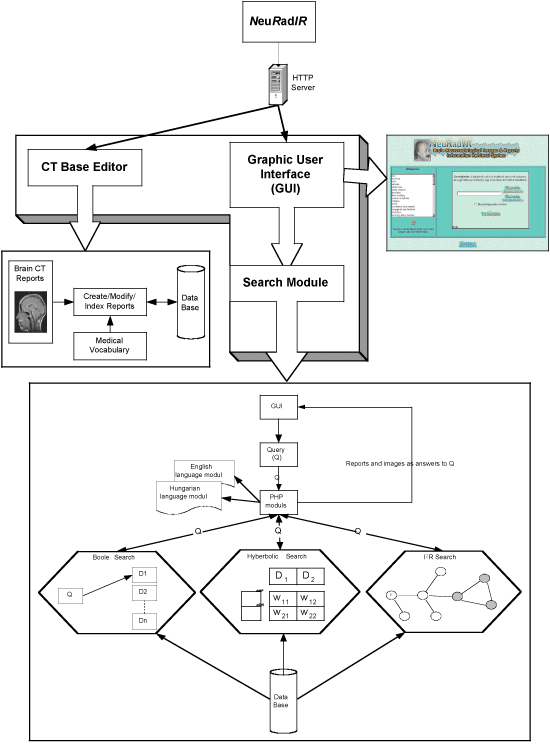
This issue in pdf Subscription Archive: Next issue: July 2005 |
|
||||
NeuRadIR: A Web-Based NeuroRadiological Information Retrieval Systemby Sándor Dominich, Júlia Góth and Tamás Kiezer The Cost-Effective Health Preservation Consortium Project was formed to develop novel, Web-based Computer Tomograph (CT) image retrieval techniques for use in medical practice, research and teaching. The project was carried out in the Department of Computer Science, Faculty of Information Technology, University of Veszprém, within the Center of Information Retrieval between 2001 and 2004. It was sponsored by the National Research and Development Fund of the Széchenyi Plan, Hungary. Medical images, like CT images, are increasingly important in healthcare, therapy treatment and medical research. The research results consist in applying information retrieval methods to human brain CT images and reporting retrieval. This represents a solution to the problem radiologists have of finding cases that match exactly or partially or are similar to the information they need, depending on the user's viewpoint. To satisfy these different requirements, three different information retrieval techniques were adopted in one system. The first is employed when the user requires cases that exactly match their information need. A Boolean retrieval technique using AND queries was used for this purpose. When the user wants to retrieve partially matching cases, the retrieval is performed by the Hyperbolic Information Retrieval (HIR) algorithm. Lastly, in order to find similar cases the Interaction Information Retrieval (I2R) method was implemented. The advantage of using all three strategies is that they complement each other: the Boolean search retrieves every case exactly matching the query, the hyperbolic search retrieves every case having a partial match to the query, while the interaction search returns the most closely associated cases based on the query. The last two techniques were developed in the Center of Information Retrieval (CIR). In medical practice, most image retrieval systems are designed to help experienced physicians with diagnostic tasks, and they require that users have prior knowledge of the field. This means they are not suitable for educational purposes. The results of our research from the application viewpoint will enhance the quality of both specialist consultation and medical education. General practitioners may confirm a diagnosis or explore possible treatment plans by consulting the CT retrieval system over the Web. Medical students may want to relate images with diagnoses, or to see images corresponding to different pathological cases such as lesion, bleed or stroke. Our system enables users (both radiologists and general practitioners) to make use of medical text and image databases over the Web, both in order to facilitate health preservation and to assist diagnosis and patient care. An assessment by radiologists found the application to be both relevant and effective. System Description
The title page of the 'Search Screen' contains a header at the top, whilst the area underneath is divided into two halves: the left half contains the terms of the controlled vocabulary, whilst the right half contains the search buttons and the query. Medical terms can be selected from the vocabulary or freely entered from the keyboard in the query line. The user selects one of the searching strategies by clicking on the appropriate button. This returns a hit list, and by clicking on any hit both textual information and CT images are displayed. The NeuRadIR system has been demonstrated on several national and international forums and can be accessed from the project homepage. In the future, we plan to extend the application by making use of feature extraction modules to index images. Link: Please contact: |
||||


